Vietnam is the fascinating and affordable Asian destination that everyone’s talking about. My student son Ed and his friends spent three weeks travelling from north to south Vietnam this summer. They took in great cities and beaches, cultural sights and unforgettable scenery that will inspire you whatever your age or travel budget. Read on for an itinerary of Vietnam highlights in the central regions around Hue and Hoi An.
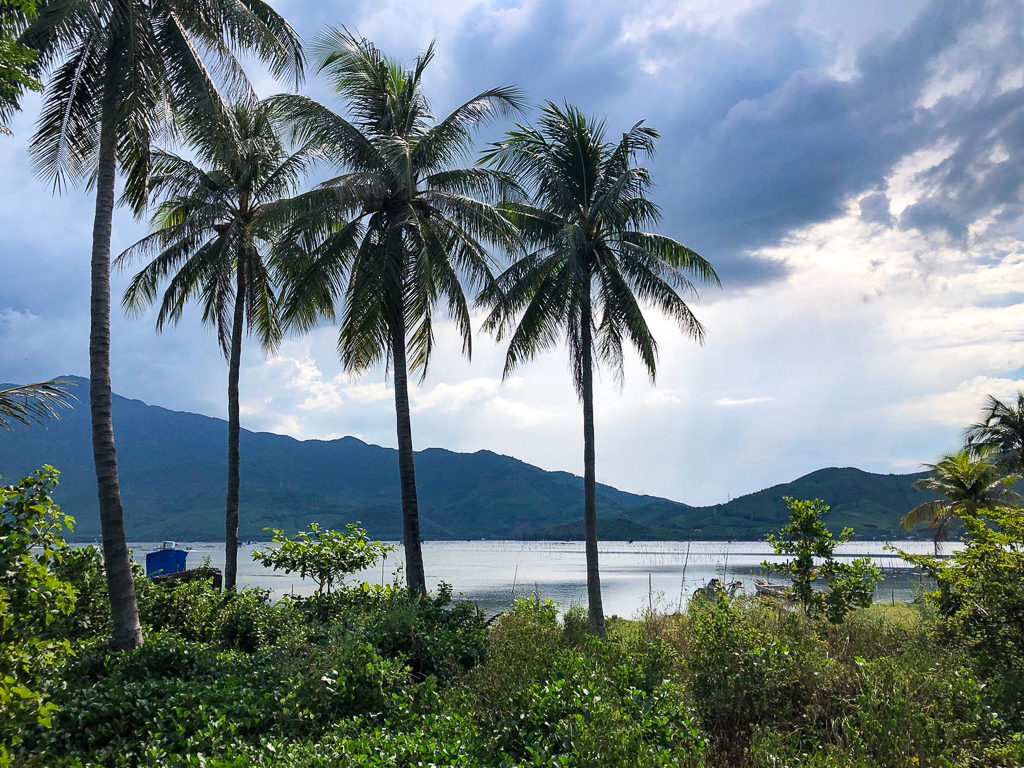
This post contains affiliate links, this means that I may receive a commission at no cost to you if you click a link and make a purchase. Thanks for your support!
Central Vietnam Itinerary
Ed spent three weeks in Vietnam in July. He and three friends started in the north, flying to Hanoi from London and taking a side trip to Halong Bay. After that they travelled south to Phong Nha to go trekking on the old Ho Chi Minh trail. You can read about the first part of their journey here. With an itinerary running from north to south Vietnam the next logical destinations on their route were the ancient cities of Hue and Hoi An. On the way they stopped off to learn a little of the sad recent history of the Vietnam American war and the Demilitarised Zone.
Ed’s a student so this was a budget trip, staying in hostels and using the cheapest forms of transport. But it’ll also appeal to anyone who’s looking for an itinerary of Vietnam highlights that mixes culture, sightseeing and fun. Just choose the transport and accommodation to suit your tastes – we’ve given options throughout.

Like this post? Please pin this to save and share on Pinterest
Phong Nha to Hue
Ed: “There are a few ways to travel the 220 km from Phong Nha to Hue, including train, car, bus or motorbike. Some are more comfortable than others! We chose the DMZ (Demilitarised Zone) bus which stops en route to give passengers the chance to see the Vinh Moch tunnels and the Ben Hai river.
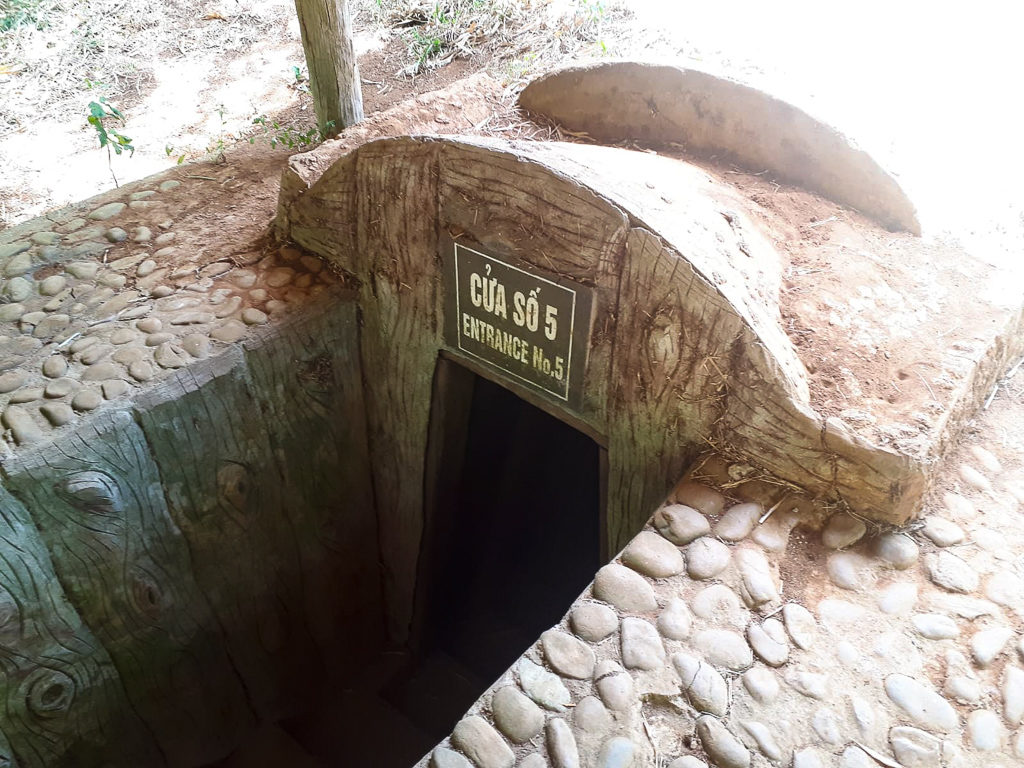
The DMZ bus, from Phong Nha to Hue, takes quite a lot longer than a direct bus, and costs extra too. We paid about 500,000 VND each, but that’s still under £20 for a 7 hour journey. I’d say it’s worth a visit to see an area that is otherwise not easy to reach.”
DMZ tour by bus
The DMZ is the demilitarised zone between North and South Vietnam which suffered heavy shelling during the Vietnam American war. The Ben Hai river divides the north and south of the country and the zone extended 5k or so north and south of the river. The area was bombed very heavily and some villages were affected so badly that the villagers dug down into the clay and limestone to create tunnels.
Visit the Vinh Moc tunnels
The Vinh Moc tunnel village complex grew and grew until up to 400 people took refuge underground. The tunnels are on different levels with places for sleeping, eating, washing, watching movies, even a maternity room. It’s noticeable how small they are, very uncomfortable for anyone taller than about 5′ 9″. Dark too, with no electric light, they must have been incredibly claustrophobic. Poignantly one of the tunnels you can visit exits onto a beautiful empty beach.
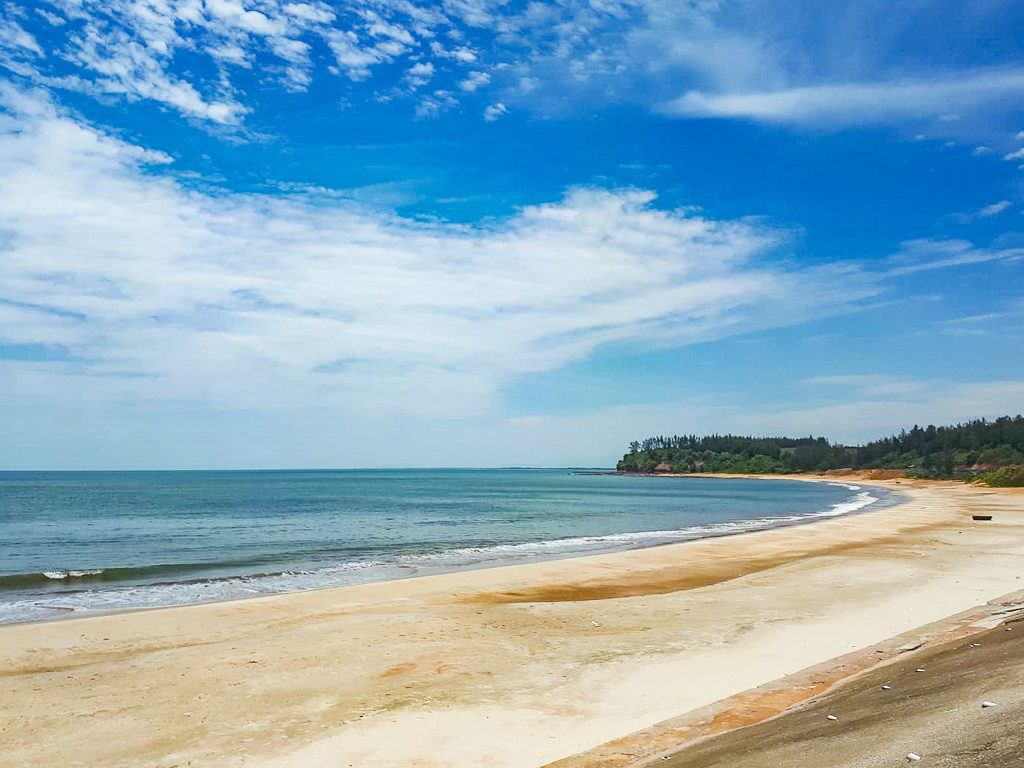
The small museum, literally just a room, has a few interesting relics and photos and maps of the time.
We stopped at the Hien Luong river with its bridge that marked the division between north and south Vietnam on the 17th Parallel. The bridge is painted half blue and half yellow to denote the two sides. To the south side of the bridge is the Desire for National Reunification monument. It’s a sculpture of a mother with children gazing across the river and symbolises the losses and separation caused by the 21 year division of the country.
The DMZ bus left Phong Nha at 6am and got into Hue about 2pm. Given the sweltering heat the air-conditioning was poor and the journey was much less comfortable than the sleeper bus to Halong Bay. Also the driver kept stopping for unspecified reasons! An air-conditioned car or minibus with a guide/ driver could be a good way to tackle this route.”
Alternatively you can take a full-day Demilitarised Zone tour from Hue. Click for more details and to book.
2 Days in Hue
“After our rather exhausting journey we had a quiet afternoon in Hue and spent the evening by the pool at our hostel. Hue was baking hot at 40°C but not as uncomfortably humid as Hanoi. It’s a very clean, slightly more open-plan city than Hanoi or Ho Chi Minh with less obvious pollution but still a lot of traffic.”

What to do in Hue
Hue is the ancient Imperial city of Vietnam. It stands on the banks of the Perfume river and is home to the vast Purple Forbidden City as well as several lavish tombs to emperors past.
The Citadel
Ed: “The walled and moated Citadel surrounds the Imperial City, which was the historic home of Vietnam’s emperors, until the last abdicated in 1945. Much of the Citadel and its pavilions, gates and palaces were damaged or destroyed by bombing during the American Vietnam war. Out of 160 buildings only a handful remain which are being restored and preserved. But they are still very impressive! Allow a good 1 to 2 hours to get round it all, as the site is full of intriguing and beautiful structures. It’s hard work in the heat although you can get little buggies to drive you round.

Abandoned Water Park
“Hue has many beautiful old tombs and temples just outside the city. But we only had one day and we’d already seen several in Hanoi. So we went to the abandoned water park instead. It’s a popular attraction amongst backpackers and people looking for unusual Instagram spots. We got a cab to take us both ways which worked out about £2 per person.”
M&F says: Ho Thuy Tien water park operated for just a few years before closing down in 2006. Since then it has achieved notoriety amongst backpackers for its potential for creepy urban adventure. Technically it is closed. The slides, shutes, aquariums, cafes and three-storey high dragon overlooking a lake are broken, grafitti’d and overgrown. There are rumours of wild crocodiles, even a curse, and of course there is absolutely no health and safety at all. On the other hand, a quick google reveals that it’s attracting lots of mainstream interest these days, even some organised tours.
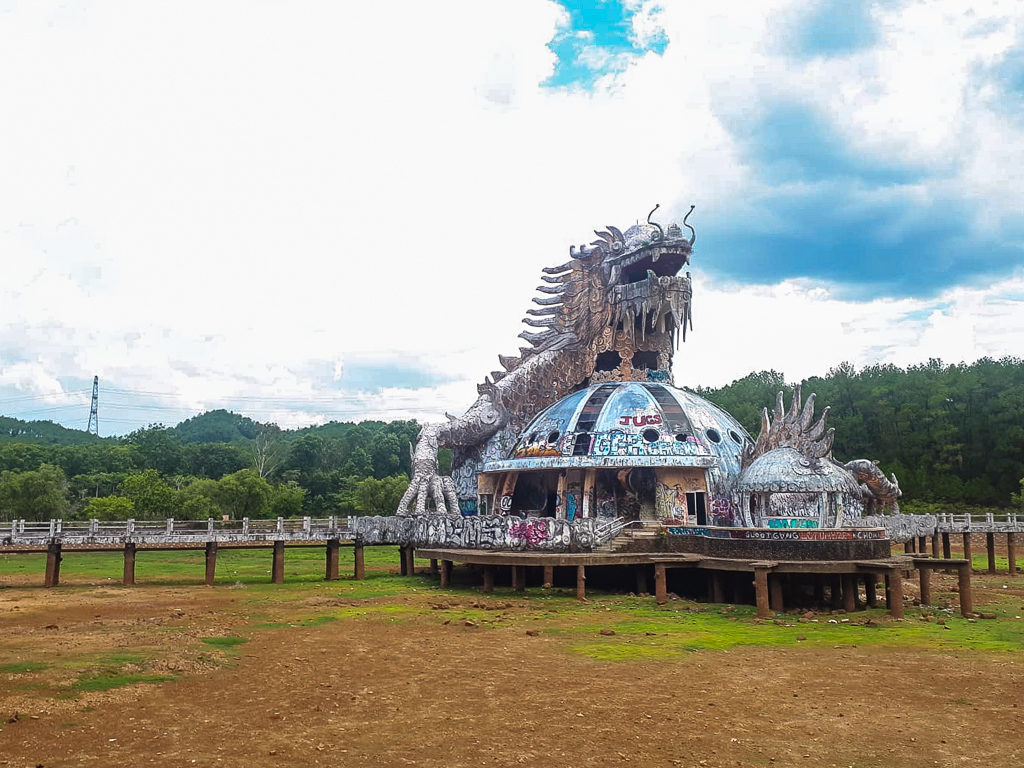
If a non-operational amusement park doesn’t appeal try these alternative things to do in Hue:
Visit the tombs of Emperors
Outside Hue, along the river, are several elaborate Royal tombs. The Minh Mang tomb is set amongst beautiful gardens, ponds and pavilions. Whilst the extravagant Khai Dinh tomb complex built in the 1920s has French influences.
Thien Mu pagoda
An historic 7-tier pagoda which overlooks the river in Hue. Monks train and study here. You can reach the pagoda by dragon boat from the city centre as well as by road.
The Perfume river
Apparently the Perfume river doesn’t smell quite as good as it did 100 years ago when petals fell into the water from orchards upstream. But it is still a key feature of Hue sightseeing tours. The river flows past the Citadel, Thien Mu pagoda, tombs and temples as well as a market and small villages, which makes a riverboat trip a relaxing way to see the city. You could combine it with a sunset dinner afloat too.
Take a full day group tour of the major sights of Hue, click here for more details and to book.
Where to stay in Hue
Click the names below for some stand-out hotels via Booking.com:
Azerai La Residence, the French governor’s mansion from colonial times, is an Art Deco delight on the banks of the Perfume river with views of the Citadel. There’s a glorious top floor suite too.
Saigon Morin hotel, an historic hotel, centrally located with large rooms and old world style.
Or stay 20 minutes outside the city at the Ana Mandara Hue Beach Resort, which is set in tropical gardens with its own private white sand beach. Rooms look stylish and luxurious and a shuttle service will take you into Hue. (Speaking as someone who always likes to stay in the heart of a city I’m surprised how tempted I am by this one!) ”
Hue to Hoi An
Ed: “It’s very cheap to travel from Hue to Hoi An on the bus so we did it on the bus. It took about 4 hours and we got some good views on the way. If you take the train, which is slightly more expensive and a bit quicker, you get amazing views of the coastline of the South China Sea and the famous Hai Van Pass.

Of course most hostels will recommend that you hire motorbikes and ride the Hai Van Pass from Hue to Hoi An. After all the TV series Top Gear called it “one of the best coast roads in the world” with its panoramic views of mountains, forests and beaches. The name Hai Van roughly translates as ‘ocean and clouds’. But you need to be a competent rider.”
Hue to Hoi An tours: alternatively you can go for the most comfortable option and hire a car and driver to whisk you from city to city. It’s a 3 hour drive or you could combine it with an all day tour to take in sights such as the Golden Bridge and Marble Mountain.
8 Things to do in Hoi An
M&F says: Golden-hued little Hoi An was a busy silk route trading port from the 15th to the 19th century. Its influence declined but the traditional town survived. It escaped bombing during the war and the old street plan with its narrow lanes, wooden buildings, temples and ochre painted merchants’ houses still show their Chinese, Japanese and European influences. The Old Town is now a UNESCO World Heritage Site. Hoi An doesn’t have an airport or even a train station and outside the town you’ll see traditional rural life including rice paddy fields and water buffalo. Here’s a round up of fun things to do in Hoi An.
Walk round the old town at night
Ed: “The most important thing to do in Hoi An is simply to walk round in the evening and soak up the ambience of the place.We found it more interesting at night than during the day because it is known as the City of Lanterns for a reason. The old town is pedestrianised at night and colourful lanterns hang everywhere. It is very beautiful but it’s also touristy and it buzzes with busy bars and restaurants.
Visit the night market
At night the Old Town lights up with hundreds of coloured lanterns, strung across the narrow streets and around the market stalls. The evening market is a great place to choose gifts and souvenirs too. Haggling is essential!
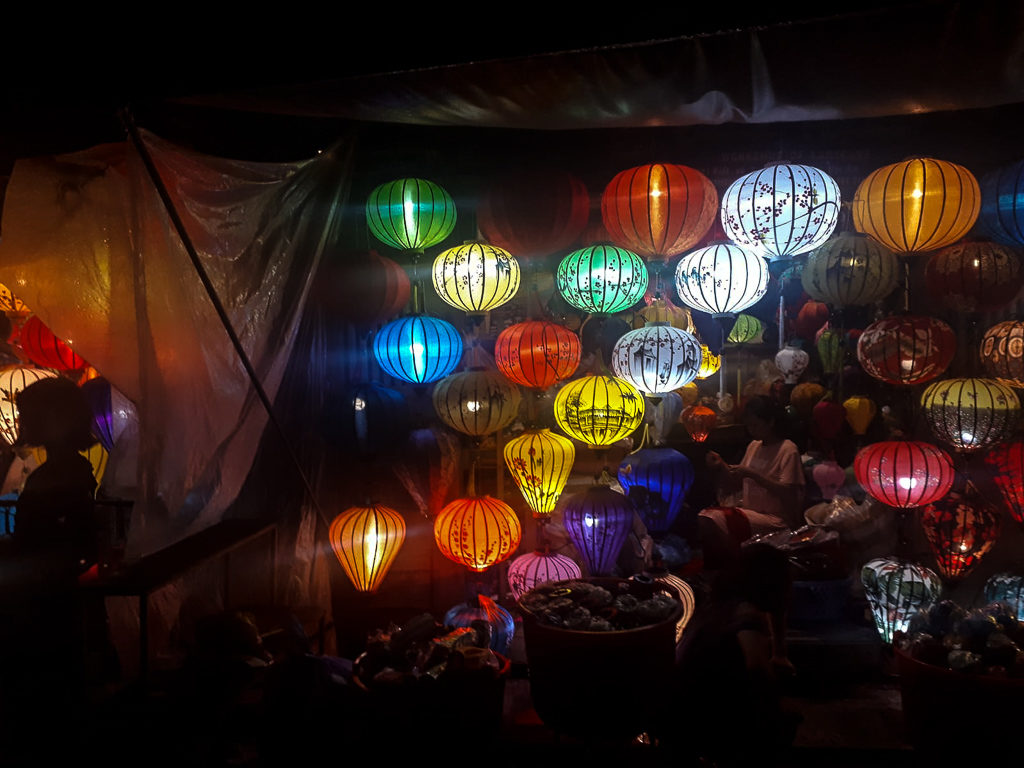
Eat by the river in the old town
Historically the riverside district was the most wealthy in town. It is very beautiful at night and there are good spots to eat. Many places operate entirely outside and even cook the food by the river.
Take a ride in a lantern boat
As you’re walking round the old town at night you’ll see lots of boats, decorated with lanterns, on the river. You can buy little paper lanterns with candles inside to float on the water and make a wish. Or hire a lantern boat to take you on a river trip through the old town.
See the Japanese bridge
This little red covered bridge is a key attraction in Hoi An. It dates from 1719 when Japanese traders built it to cross a little canal in the old town and connect the Japanese and Chinese communities there. It’s very pretty at night when it’s illuminated.
Go to the beach
Hoi An has beautiful beaches. We went to An Bang which is a little outside town, about 5 minutes from our hostel by taxi. It’s slightly quieter than the main tourist beaches and it had the warmest sea water I’ve ever experienced! An Bang is an organised beach with sunbeds, umbrella hire and plenty of restaurants and bars. Lots of local people go to the beach after work so although we arrived in the morning it didn’t start to get really busy until after 3pm.
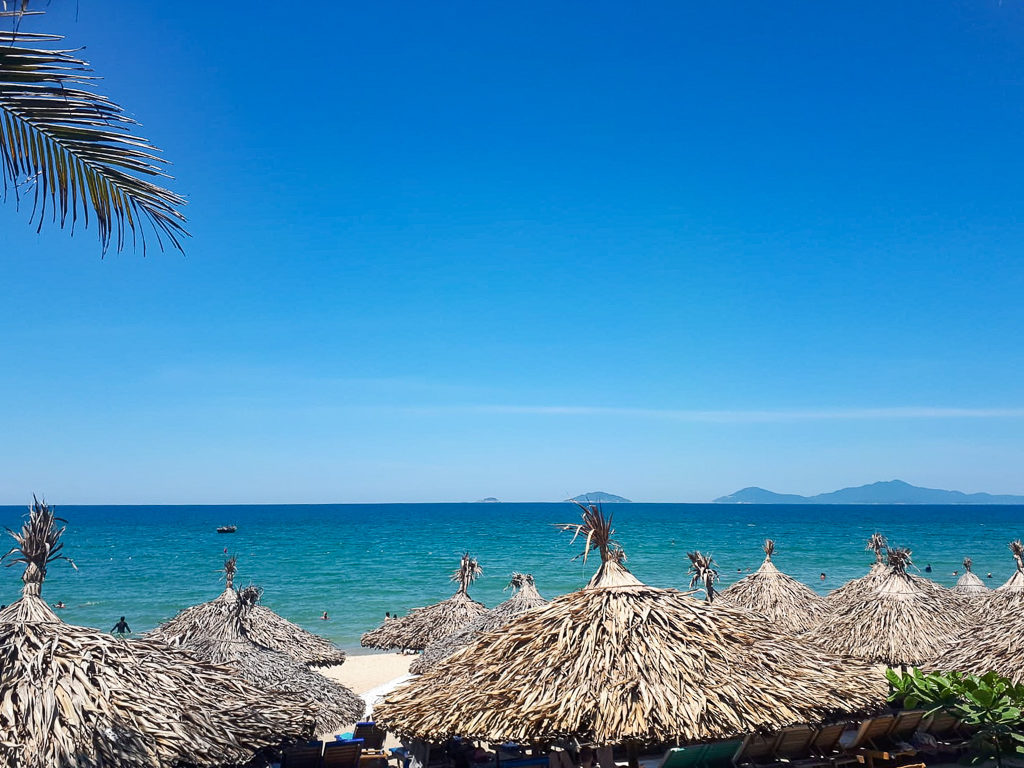
Get a massage
The famous Vietnamese massage is very popular in Hoi An. You can get one at spas on the beach or in town.
Visit a tailor
With more than 400 tailors’ shops to choose from in Hoi An it’s no wonder visitors decide to order a custom made suit or dress. Clothes can be ready to wear in just a day or two.”
Here’s a selection of tours that explore Hoi An and its surroundings from Get Your Guide:
Visit a morning market then cruise down the river past the traditional fishing nets. Paddle through water coconut palms in a basket boat and learn to cook some Vietnamese food. Click here for reviews and to book: Market tour, basket boat ride, cooking class.
As the sun goes down explore the cafes, food stalls and restaurants of Hoi An’s old town on this evening small group food tasting tour.
Cycle to the rice paddy fields, don traditional farming clothes with conical hat and get dirty learning the daily tasks of a rice farmer. More details and reviews here: Interactive rice farming tour.
Where to stay in Hoi An
To browse a wide selection of hotels and apartments in Hoi An via Booking.com click here. Set the filters you prefer then scroll through images, descriptions and reviews to find the accommodation that suits you best. We’ve picked these for a mix of style, convenience and good reviews:
Anantara Hoi An Well located in walking distance from the Old Town, a French colonial style resort hotel with river and garden views, pool, spa, traditional Vietnamese painting lessons…..
Beachside Boutique Colourful and quirky, set beside An Bang beach with sea views, an outdoor pool and private beach area. Free bike hire if you fancy the 2.5 mile pedal into the Old Town.
Hoi An hostel
Ed: “We stayed at a Vietnam Backpackers Hostel (VBH) in Hoi An. This is the most prominent chain of hostels in Vietnam: they’re all over the place. VBH is good fun and this one had decent facilities, good wifi and a pool.
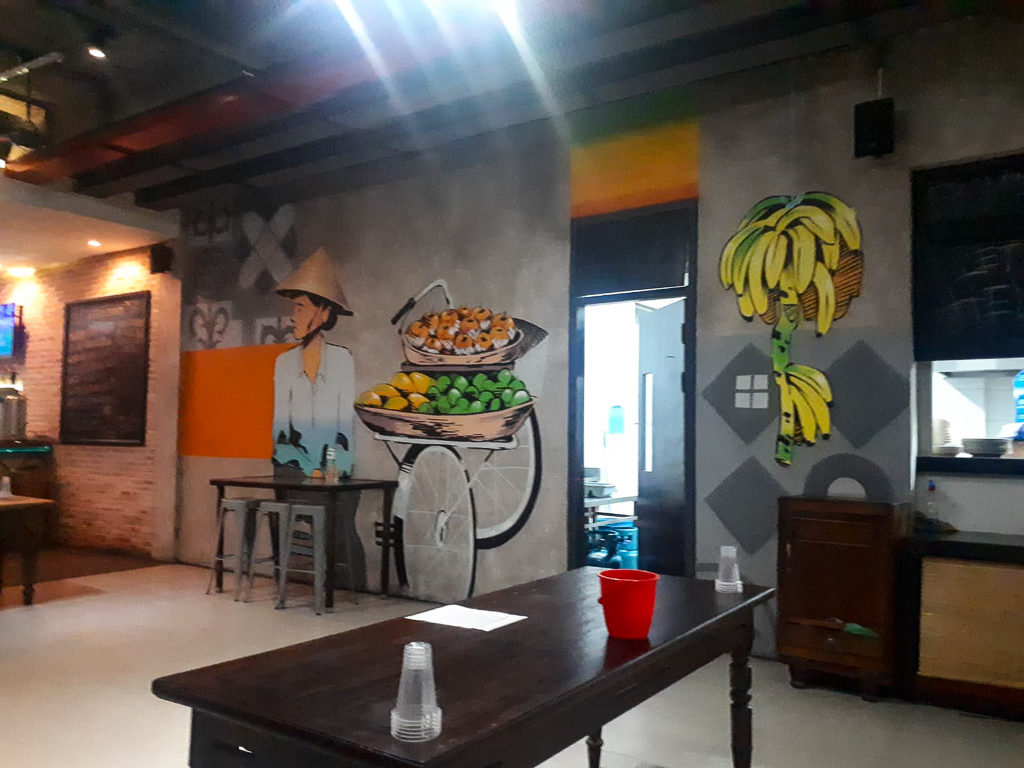 The host encourages you to drink and socialise with other visitors so I wouldn’t recommend it if you want a quieter time, but we really enjoyed it!”
The host encourages you to drink and socialise with other visitors so I wouldn’t recommend it if you want a quieter time, but we really enjoyed it!”
Click here to read reviews and check for availability at VBH Hoi An.
Where to go from Hoi An
Ed and his friends headed south to Da Lat and Ho Chi Minh City. You can read about the final leg of their journey very soon. To catch up on their North Vietnam itinerary, click here.
It’s also worth knowing that Hoi An is about 45 minutes by taxi from Da Nang international airport. If you’re budgeting for internal flights this is pretty convenient. You can fly to Hanoi in the north or Ho Chi Minh City in the south in under 2 hours. Or you could nip up to the hill town of Da Lat in a great deal less time than it took Ed. But you’ll need to read Part 3 to find out about that journey!
Vietnam Highlights
Please note that all visitor information here is for guidance only. Please check the venues’ websites for the most up to date information on tickets, entrance requirements, opening times etc.

Like this post? Please pin this to save and share to Pinterest
All photos are all rights reserved. Please do not reproduce these photos without prior written permission.



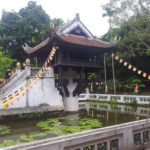

beatravelling says
Might be part of my travels next fall 🙂 That dragon house is cool!! #farawayfiles
Map & Family says
Vietnam seems to be such a popular destination at the moment – and it has so much to offer!
Clare (Suitcases and Sandcastles) says
The Vinh Moc tunnels sound fascinating. We really enjoyed our stay in both Hue and Hoi An although Hoi An had to be our favourite – it’s the most enchanting town. Thanks for sharing this on #farawayfiles. I’m really enjoying reading about your son’s trip.
Map & Family says
The Vinh Moc tunnels survived but I was very sad to hear how other villages weren’t so lucky. Totally agree about Hoi An – Vietnam is such a country of contrasts.
Corey | Fifi + Hop says
I’d love to visit Vietnam some day. It’s definitely a top of the bucket list destination for me. I find the tourism of the old amusement park so bizarre! Even organized tours?! I guess I’d have to be there to get it. Thanks for linking up your son’s journey with #farawayfiles
Map & Family says
Strange isn’t it!😂